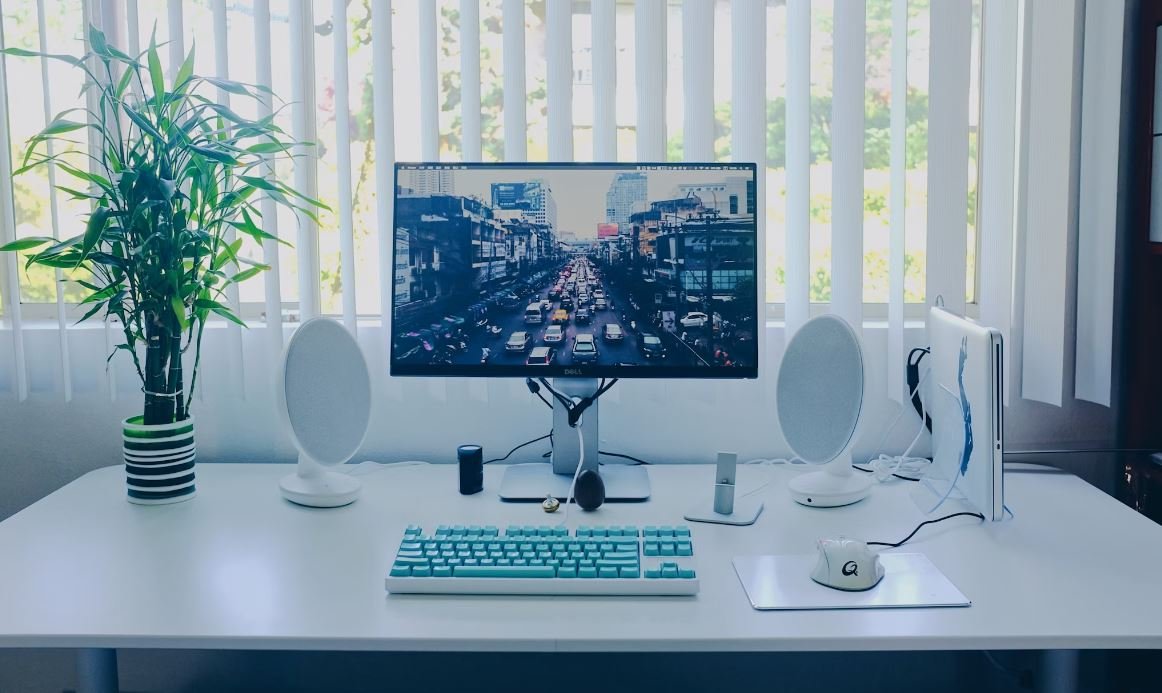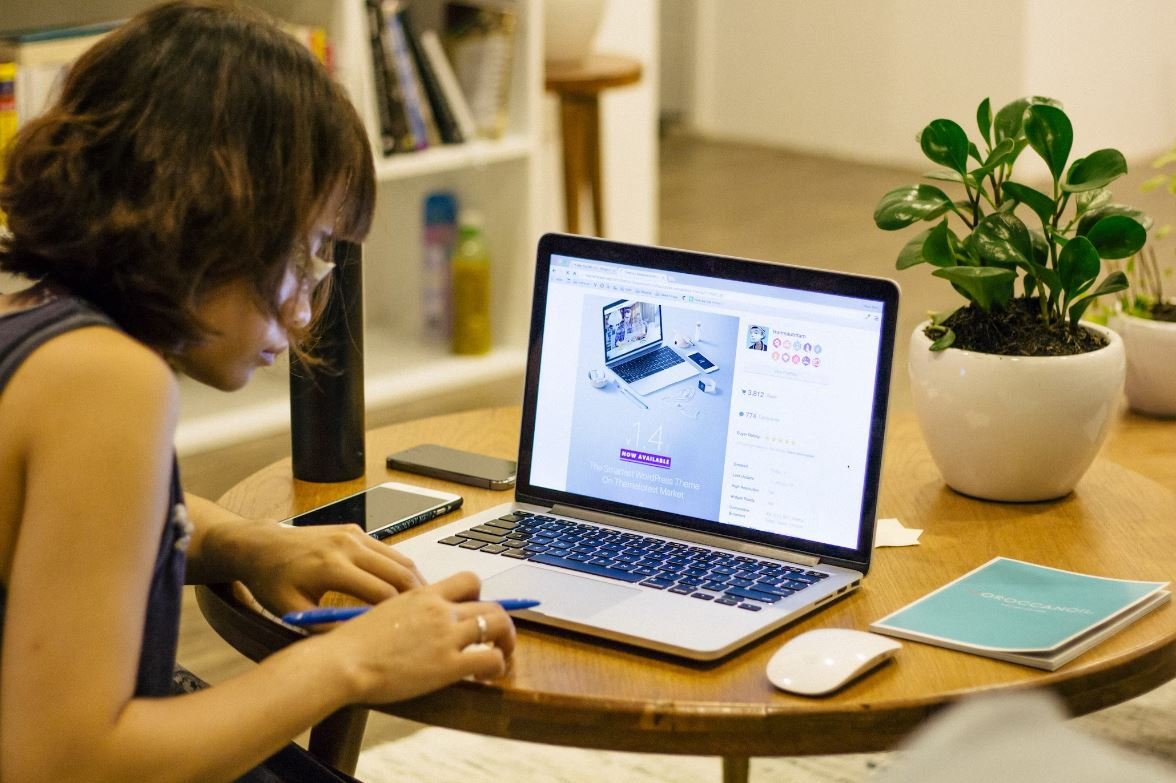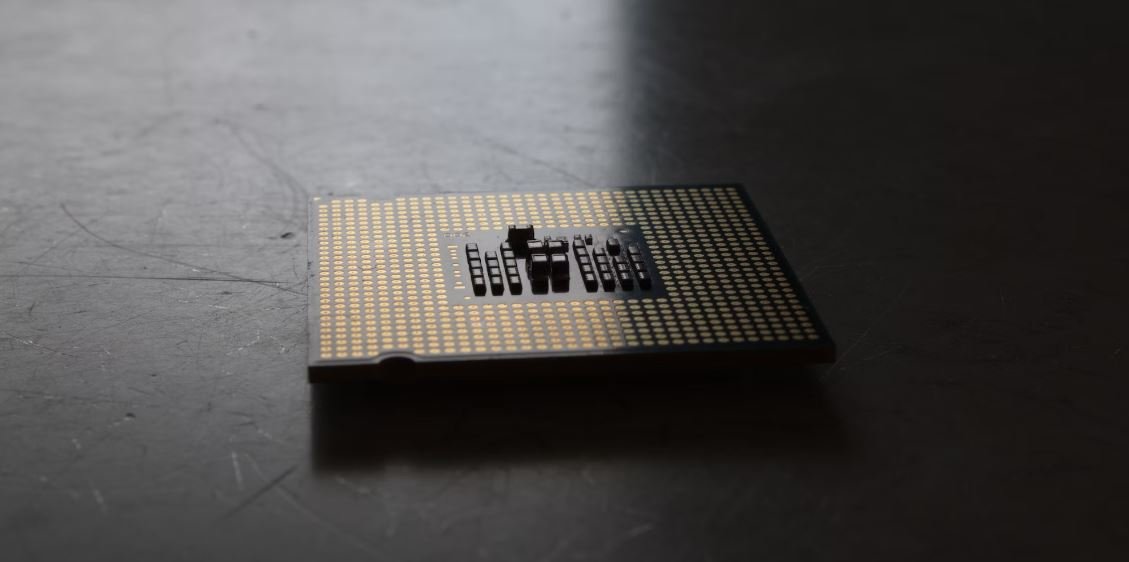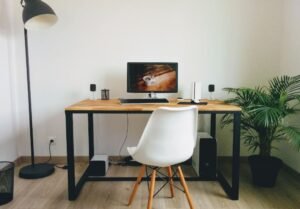What Is Publication Design
Publication design is the art and practice of arranging textual and visual content in a visually appealing and organized manner for print or digital publishing. It combines graphic design, typography, layout, and overall aesthetic elements to create visually engaging publications such as books, magazines, newspapers, brochures, and websites.
Key Takeaways:
- Publication design is the art of arranging content in a visually appealing manner.
- It involves graphic design, typography, layout, and overall aesthetic considerations.
- Publications can be in print or digital formats.
Publication design plays a crucial role in effectively communicating information and enhancing the overall reading experience. It involves various elements that contribute to the visual appeal and readability of a publication. **Graphic design** brings concepts and ideas to life through imaginative visuals that complement the content. **Typography** determines how text is presented, making it easier to read and understand. **Layout** involves the placement of text and visuals on a page or screen in a logical and aesthetically pleasing manner.
*Publication design is a meticulous process that requires attention to detail and a deep understanding of graphic design principles and visual hierarchy.* By carefully considering factors such as **alignment**, **contrast**, **proximity**, and **white space**, designers create a harmonious visual flow that guides readers through the publication effortlessly.
The Importance of Publication Design
A well-designed publication captures attention, enhances readability, and leaves a lasting impression on the reader. * Professionally designed publications help establish credibility and professionalism, regardless of whether they are in print or digital format. Effective publication design creates a cohesive aesthetic that reflects the brand identity and message, making the content more engaging and memorable for the audience.
The Components of Publication Design
Publication design involves several components that work together to create a visually appealing and coherent publication. These components include:
- **Cover Design**: The cover is the first impression of a publication and needs to capture attention and convey the essence of the content.
- **Typography**: Choosing the right fonts and formatting the text in a visually pleasing way ensures readability and helps convey the desired tone.
- **Color**: Strategic use of color enhances the overall aesthetic and invokes emotions that align with the publication’s purpose.
- **Layout**: The arrangement of text, images, and other visual elements on a page or screen affects how readers navigate and engage with the content.
- **Images and Graphics**: Visual elements play a critical role in establishing the tone, supporting the content, and reinforcing the message.
- **Hierarchy**: The organization of content through headings, subheadings, and visual cues helps prioritize information and improve readability.
Publication Design in Print vs. Digital
While the principles of publication design remain similar, there are some key differences between print and digital publications. These differences stem from the unique characteristics and limitations of each medium. Here are a few differentiating factors:
| Print Publication Design | Digital Publication Design |
|---|---|
| Physical form | Interactive and responsive |
| Fixed layout | Dynamic and adaptable layout |
| Limited multimedia integration | Supports multimedia elements such as videos, animations, and hyperlinks |
Print publications offer a tangible reading experience, while digital publications offer interactivity and multimedia integration. * Designers must consider these differences when creating publications to optimize the user experience and leverage the strengths of each medium.
Future Trends in Publication Design
As technology continues to advance, publication design is expected to evolve alongside it. Here are some future trends to watch out for:
- **Responsive Design**: More emphasis will be placed on designing publications that adapt to different screen sizes and devices.
- **Interactive Elements**: Incorporating interactive features and multimedia elements will engage readers in new and exciting ways.
- **Virtual and Augmented Reality**: Immersive experiences will likely be utilized to enhance storytelling and reader engagement.
Publication design is an integral part of the publishing process, impacting how readers perceive and engage with content. Whether in print or digital format, a well-designed publication can create a lasting impact on its audience. Keep an eye on upcoming trends and embrace new design possibilities to stay ahead in this ever-evolving field.

Common Misconceptions
Misconception 1: Publication design is all about making things look pretty
One common misconception about publication design is that it is solely concerned with aesthetics and making things look visually appealing. While aesthetics are certainly an important aspect of publication design, there is much more to it than just making things pretty.
- Publication design also involves considering the target audience
- Publication design requires effective organization and layout
- Publication design entails using typography and color to enhance readability and communication
Misconception 2: Anyone can do publication design
Another misconception is that anyone with a basic knowledge of graphic design software can easily do publication design. However, publication design requires a combination of artistic skills, technical knowledge, and an understanding of how to convey information effectively.
- Publication design often requires specialized software and tools
- Publication design involves knowledge of design principles and best practices
- Publication designers have expertise in creating visually appealing and cohesive layouts
Misconception 3: Publication design is only for print media
There is a common belief that publication design is limited to print media and does not extend to digital platforms. However, with the rise of digital publishing, publication design has become equally important for online publications, e-books, and interactive media.
- Publication design for digital platforms often involves responsive and user-friendly layouts
- Publication designers need to consider the interactive elements and user experience
- Publication designers must adapt designs for different devices and screen sizes
Misconception 4: Publication design is a one-time process
Some people mistakenly think that publication design is a one-time process completed at the beginning of a project. In reality, publication design is an ongoing process that continues throughout the entire life cycle of a publication.
- Publication design often requires updates and revisions as content changes
- Publication designers need to keep up with design trends and evolving technology
- Publication design involves maintaining consistent branding and visual identity
Misconception 5: Publication design is separate from content development
Another misconception is that publication design is a completely separate process from content development. While the two processes are distinct, they are closely intertwined and should be considered together to create an effective and cohesive publication.
- Publication designers work closely with content creators to understand the message and purpose of the publication
- Publication design enhances the readability and comprehension of the content
- Publication design should align with the content’s tone and style

History of Publication Design
Explore the evolution of publication design and its impact on the industry throughout history.
| Year | Publication | Design Highlights |
|---|---|---|
| 1450 | Gutenberg Bible | First major publication using movable type, pioneering typography. |
| 1751 | Encyclopédie | Integrated illustrations and text, standardized typography. |
| 1901 | Münchner Illustrierte Presse | Introduced photojournalism, revolutionizing visual storytelling. |
| 1917 | De Stijl | Embraced simplicity and geometric forms, influencing modern design. |
| 1933 | Bauhaus Magazine | Experimented with structure, typography, and photography. |
The Importance of Typography
Typography is a key element in effective publication design. It conveys the tone and enhances readability.
| Font | Category | Characteristics |
|---|---|---|
| Helvetica | Sans-serif | Clean, versatile, widely used in contemporary design. |
| Garamond | Serif | Classic, elegant, ideal for long blocks of text. |
| Futura | Geometric sans-serif | Modern, bold, geometric shapes convey a futuristic feel. |
| Baskerville | Transitional serif | Highly legible, combines elegance with modern characteristics. |
| Comic Sans MS | Casual | Often criticized, but playful and useful in certain contexts. |
Color Psychology in Design
Colors play a crucial role in evoking emotions and setting the mood in publication design.
| Color | Meaning | Applicable Areas |
|---|---|---|
| Red | Passion, energy, urgency | Attention-seeking content, call to action buttons. |
| Blue | Trust, calmness, reliability | Financial publications, corporate branding. |
| Yellow | Optimism, happiness, creativity | Children’s books, artistic publications. |
| Green | Nature, growth, harmony | Environmental publications, health-related content. |
| Purple | Royalty, luxury, spirituality | Fashion magazines, high-end lifestyle publications. |
Layout Techniques for Impactful Designs
Strategic use of layout techniques can enhance the visual appeal of publications and guide readers’ attention.
| Technique | Description | Examples |
|---|---|---|
| Grid Systems | Organize content into consistent and harmonious layouts. | Newspapers, magazines. |
| White Space | Utilize empty areas to create visual breathing room and highlight key elements. | Minimalist designs, luxury branding. |
| Hierarchy | Establish a visual order based on importance, guiding readers through the content. | Headlines, subheadings, pull quotes. |
| Collage | Combine various visual elements to create a dynamic and captivating design. | Art publications, creative magazines. |
| Asymmetry | Break away from traditional symmetrical layouts to create a sense of energy and uniqueness. | Modern designs, edgy publications. |
Effective Use of Images
Images are powerful tools in publication design, contributing to storytelling and engaging the audience.
| Type | Purpose | Usage |
|---|---|---|
| Photographs | Evoke emotions, provide realistic visual representation. | Photo features, travel articles. |
| Illustrations | Add a unique artistic style, capture abstract concepts. | Editorial illustrations, children’s books. |
| Infographics | Present complex data and information in a visually appealing and easy-to-understand format. | Reports, educational publications. |
| Charts and Graphs | Visualize numerical data and trends, enhance data-driven articles. | Business magazines, scientific journals. |
| Comics | Blend storytelling with visuals, add humor or satire to the content. | Satirical news publications, entertainment magazines. |
Typography Trends in Modern Design
Discover the latest typography trends shaping contemporary publication design.
| Trend | Description | Examples |
|---|---|---|
| Hand-Lettering | Custom-made lettering, adding a personal, unique touch. | Branding, artisanal publications. |
| Mixed Fonts | Combining multiple fonts to create contrast and visual interest. | Editorials, fashion publications. |
| Responsive Typography | Adapting fonts to different screen sizes and resolutions for optimal readability. | Responsive websites, digital publications. |
| Gothic Revival | Reviving medieval-inspired typography, conveying historic elegance. | Book covers, historical publications. |
| Text Art | Transforming typography into visual art, exploring unconventional patterns. | Artistic magazines, experimental designs. |
Publication Design and Branding
Successful publication design aligns with the visual identity of a brand or publication to create a cohesive experience.
| Brand | Design Style | Characteristic Elements |
|---|---|---|
| National Geographic | Natural, adventurous | Bold typography, vibrant nature photography. |
| Vogue | Glamorous, luxurious | Elegant typography, high-fashion photography. |
| Wired | Technological, modern | Futuristic typography, sleek illustrations. |
| The New Yorker | Intellectual, witty | Clean typography, clever cartoon illustrations. |
| Nike | Energetic, inspiring | Dynamic typography, powerful athlete imagery. |
Publication Design in the Digital Age
With the rise of digital platforms, publication design has adapted to cater to online readership.
| Platform | Design Techniques | Advantages |
|---|---|---|
| Websites | Responsive design, interactive elements, integrated multimedia. | Instant reach, easy distribution, dynamic content. |
| Tablets | Swipeable layouts, interactive features, multimedia integration. | Enhanced interactivity, immersive reading experience. |
| E-books | Adaptive design, interactive elements, hyperlinking. | Easy accessibility, portability, interactive content. |
| Social Media | Visual storytelling, concise content, shareability. | Wide audience reach, instant engagement. |
| Email Newsletters | Clean, scannable layouts, clear call-to-actions. | Direct communication, personal touch, targeted content. |
Conclusion
Publication design plays a vital role in conveying information, engaging readers, and enhancing the overall reading experience. From the evolution of design throughout history to the effective use of typography, color, layout techniques, and imagery, every element contributes to creating visually compelling and memorable publications. With the digital age bringing new platforms and opportunities, publication design continues to adapt to cater to an ever-evolving readership. By understanding the principles and trends in publication design, professionals can create visually stunning publications that effectively communicate their message and captivate their audience.
Frequently Asked Questions
What Is Publication Design?
Publication design refers to the process of arranging text, images, and other elements in a visually appealing and coherent manner for print or digital publications. It involves creating layouts, selecting fonts, colors, and images, and organizing content to effectively communicate a message or story.
What does a publication designer do?
A publication designer is responsible for conceptualizing and creating the visual appearance of a publication. They work closely with writers, editors, and other team members to design layouts, choose typography, select and edit images, and create a cohesive visual identity for the publication.
What are the key elements of good publication design?
Good publication design incorporates various key elements, such as:
- Clear hierarchy and organization of content
- Aesthetic appeal through the use of color, typography, and imagery
- Consistency in design elements, such as fonts, spacing, and styling
- Effective use of white space to create visual balance
- Appropriate and consistent use of branding elements
- Attention to detail in typography, formatting, and alignment
- Readability and legibility of text
What are the different types of publications that require design?
Publication design is required for a wide range of publications, including but not limited to:
- Books and magazines
- Newspapers and newsletters
- Brochures and pamphlets
- Annual reports and corporate documents
- Posters and flyers
- Advertisements and marketing materials
What skills are important for a publication designer?
Important skills for a publication designer include:
- Creativity and a strong sense of visual aesthetics
- Strong knowledge of design principles and typography
- Proficiency in design software, such as Adobe InDesign and Photoshop
- Attention to detail and excellent communication skills
- Ability to work under tight deadlines
- Ability to collaborate effectively with a team
How does publication design differ for print and digital publications?
Publication design for print and digital publications differs in several ways:
- Print design focuses on creating layouts for physical pages, considering factors like paper size, binding, and printing limitations. Digital design focuses on layouts for electronic displays, considering factors like screen resolutions and responsive design.
- Print design often involves designing for a fixed layout, while digital design allows for more dynamic, interactive layouts.
- Print design requires consideration for printing processes and color management, while digital design may involve considerations for multimedia, animations, and user experience.
How can good publication design impact the success of a publication?
Good publication design plays a crucial role in the success of a publication by:
- Enhancing the overall visual appeal and professionalism of the publication, capturing the attention of the audience
- Improving readability and comprehension of the content, making it easier for the audience to engage with the material
- Communicating information effectively through appropriate use of visuals, typography, and layout, aiding in the delivery of the intended message
- Creating a distinct and memorable visual identity for the publication, helping it stand out from competitors
What are some common challenges in publication design?
Common challenges in publication design include:
- Balancing aesthetics with readability and legibility
- Managing content hierarchy and ensuring important information stands out
- Adapting designs for different publication formats and sizes
- Ensuring consistency across multiple pages or issues
- Managing complex layouts with large amounts of content
How can I improve my publication design skills?
You can improve your publication design skills by:
- Studying design principles, typography, and layout techniques
- Practicing designing layouts for different types of publications
- Keeping up with design trends and exploring various sources of inspiration
- Experimenting with different color schemes, fonts, and imagery
- Seeking feedback and critiques from other designers or professionals in the industry
- Continuously learning and staying updated with design software and tools




